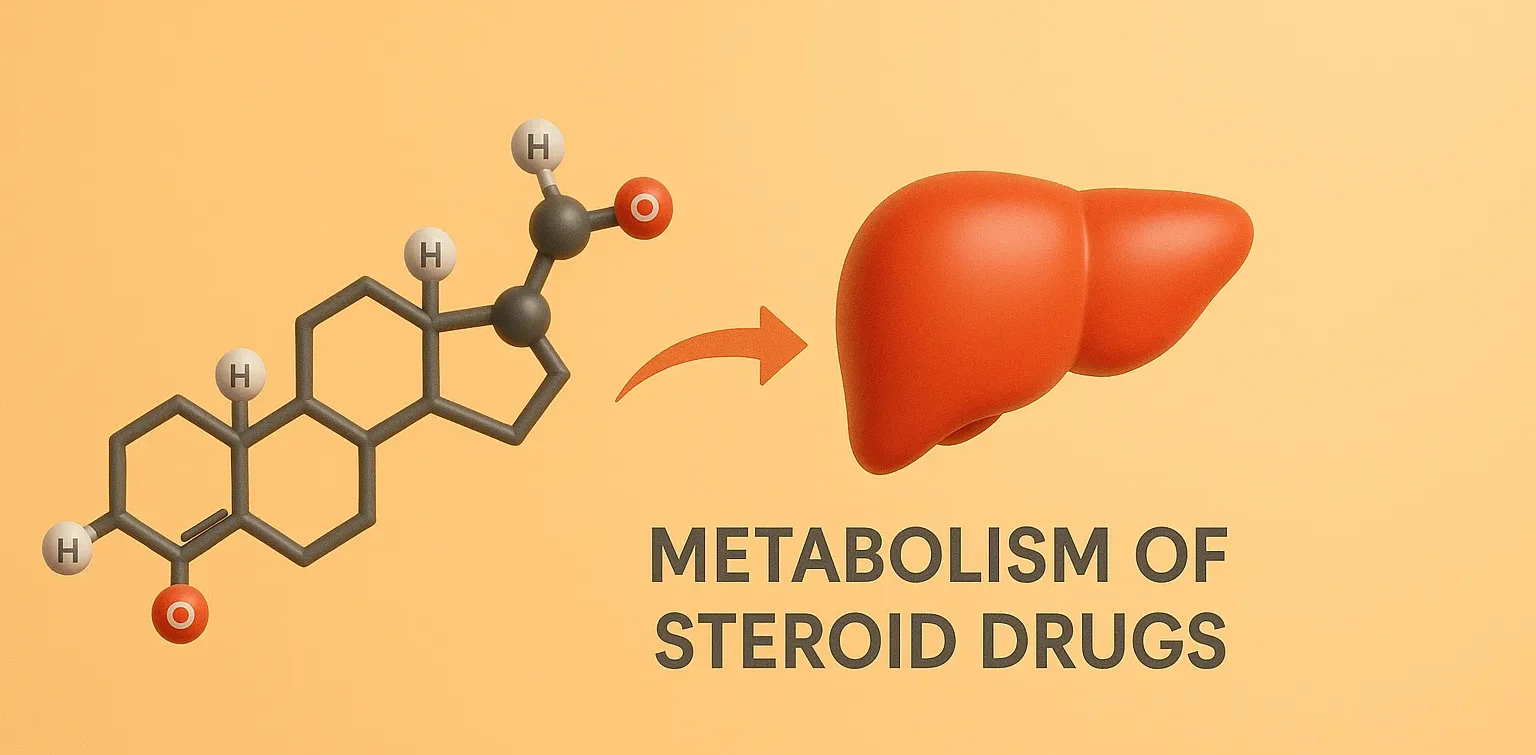Metabolism of Steroid Drugs:
Metabolism of steroid drugs involves their chemical breakdown and transformation in the body for activity or elimination.
Primary Sites of Metabolism:
- Liver: Main organ responsible for steroid metabolism through enzymatic processes.
- Gut and Kidneys: Participate in conjugation and excretion.
Key Metabolic Pathways:
-
Hydroxylation:
- Addition of hydroxyl groups by Cytochrome P450
- Increases water solubility for excretion.
-
Oxidation and Reduction:
- Modifies functional groups, altering activity and facilitating elimination.
-
Conjugation:
- Glucuronidation: Addition of glucuronic acid.
- Sulfation: Addition of sulfate groups.
- Enhances solubility and reduces toxicity.
-
De-esterification:
- Ester forms (prodrugs) are converted to active drugs (e.g., Prednisone to Prednisolone).
Factors Affecting Metabolism:
- Enzyme Variability: Genetic differences can influence enzyme activity, affecting drug levels.
- Interactions: Other drugs can inhibit or induce metabolic enzymes, altering steroid efficacy and safety.
- Route of Administration: Oral steroids undergo first-pass metabolism, reducing bioavailability compared to intravenous forms.
Advertisements
Examples of Metabolism of Steroid Drugs:
- Prednisone: Metabolized to Prednisolone in the liver.
- Testosterone: Converted to DHT or Estrogen via specific enzymes like 5α-reductase and aromatase.

